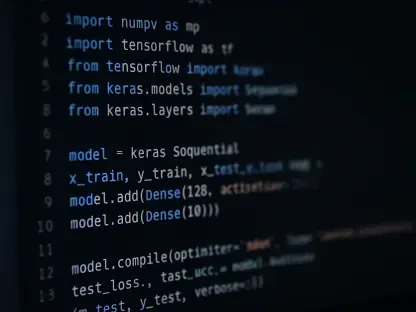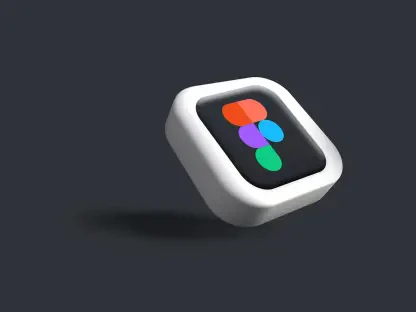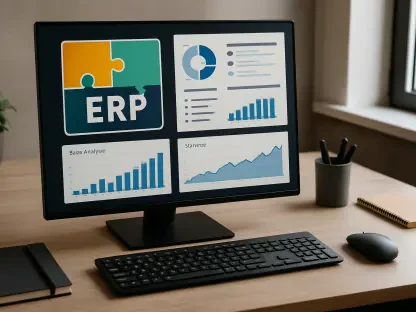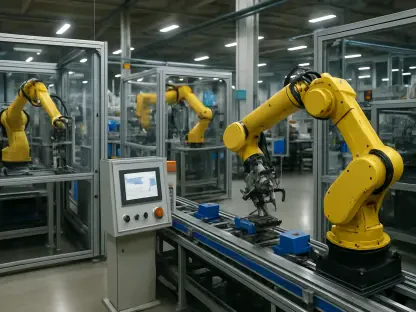The tech landscape constantly evolves, and so do operating systems. Redox OS is an emerging player in this field, designed to serve as a modern alternative to Unix-like systems such as Linux and BSD. What sets Redox OS apart is its foundation in the Rust programming language and its adoption of a microkernel architecture, bringing enhanced security, stability, and modularity. Developed by Jeremy Soller, Redox OS leverages the futuristic capabilities of Rust to promise a scalable, efficient, and secure operating system. This article will delve into what makes Redox OS unique, its current development status, and initial user impressions, with a focus on its innovative architecture, compatibility aspects, tooling, and future potential as a robust and modern OS.
Introduction to Redox OS
Redox OS differentiates itself from traditional operating systems through its unique architecture and language backbone. Developed by Jeremy Soller, it promises enhanced security, stability, and modularity by leveraging the futuristic capabilities of Rust. In contrast to the monolithic kernels found in many mainstream OSes, Redox OS employs a microkernel architecture, placing most system services in user space. This design leads to a more secure and stable environment, as issues in one process do not ripple across the entire system.
The Rust programming language, chosen for its focus on memory safety and performance, allows Redox OS to ensure a more secure environment without the overhead of a garbage collector. This makes Rust particularly suitable for system-level programming, where performance and reliability are critical. The combination of Rust’s safety guarantees and the microkernel approach positions Redox OS as a promising solution for a secure and efficient operating system.
Key Features and Unique Selling Points
A significant feature of Redox OS is its microkernel architecture. Unlike monolithic kernels, which bundle all system services within the kernel space, Redox OS runs these services as user-level processes. This leads to superior security and stability, as faults in one service cannot easily disrupt the entire system. The microkernel approach ensures that critical processes are isolated, minimizing the impact of a malfunction in any single component and leading to a more robust overall system.
Another standout feature is the choice of Rust as the programming language. Rust focuses on safety and performance, ensuring memory safety without the need for a garbage collector. This makes Rust particularly suitable for system-level programming, demanding both reliability and efficiency. Writing the system in Rust offers substantial benefits, primarily through its design, which aims to prevent common programming errors that can lead to security vulnerabilities. This focus on safety and performance makes Rust an ideal choice for an operating system designed to be both secure and high-performing.
Redox OS also stands out through its POSIX compatibility, a significant advantage that enables the system to run many Linux and BSD applications directly. This compatibility aims to make the transition to Redox OS smoother for users familiar with Unix-like systems, allowing them to leverage existing software and tools without substantial modification. By ensuring POSIX compatibility, Redox OS can provide a familiar environment for developers and users, facilitating its adoption and integration into existing workflows.
Hardware Support and Modular Drivers
Redox OS shows impressive adaptability by supporting multiple CPU architectures, including x86-64, i686, and ARM64. Future releases aim to extend this support to platforms like RISC-V, showcasing the system’s forward-thinking approach to hardware compatibility. This broad support for various architectures highlights Redox OS’s potential to cater to a wide range of hardware environments, making it a versatile choice for different use cases. This adaptability ensures that Redox OS can keep pace with the diversifying hardware landscape and remain relevant as new platforms emerge.
The modularity of Redox OS extends to its drivers, which are designed to be easily maintainable and updatable. This modular approach simplifies the management of hardware interactions, making it easier to add new drivers or update existing ones without destabilizing the system. The ability to independently update or replace drivers without affecting the system’s overall stability is a notable strength, as it reduces downtime and enhances the system’s resilience to changes. This modular design aligns with the overall goal of creating a secure, stable, and easily maintainable operating system.
Filesystem and Licensing
Redox OS introduces an innovative filesystem inspired by ZFS, offering modern file management features that ensure data reliability and integrity. This advanced filesystem design is a substantial step forward in safeguarding user data against loss and corruption. The focus on data integrity and reliability reflects Redox OS’s commitment to providing a robust and secure environment for users. The ZFS-inspired filesystem brings advanced capabilities like snapshotting and data checksumming, aimed at preventing data loss and ensuring consistency even in the face of hardware failures or other issues.
Licensing is another area where Redox OS stands out. The system is released under the MIT license, encouraging open-source development and community contributions. This licensing choice ensures that Redox OS remains accessible and can evolve through collaborative efforts. The MIT license is known for its permissiveness, allowing developers to freely use, modify, and distribute the software. This fosters an open and collaborative development environment, which is crucial for the growth and maturation of an open-source project like Redox OS. Community contributions play a vital role in the continuous improvement and expansion of the system’s capabilities.
Initial Impressions and User Experience
Booting Redox OS on a Dell G15 G5530 laptop involved flashing the live ISO onto an external SSD. The initial setup was smooth, prompting the user to select a screen resolution before leading to the main login screen. However, there were some limitations that affected the overall experience. Notably, the system currently lacks support for USB peripherals and storage devices, which could inconvenience users relying on external keyboards, mice, or drives. This shortcoming is anticipated to be addressed in future updates, but it currently limits the system’s usability for tasks requiring external peripherals.
The Orbital desktop environment is another highlight of the user experience. Redox OS employs the Orbital desktop environment, which combines a display server, window manager, and compositor. This integration results in a visually appealing user interface, featuring aesthetic elements like NASA-sourced wallpapers. Despite this polished appearance, some applications experienced issues such as infinite loading screens or crashes, likely due to GPU driver problems. Nonetheless, the integration of the Orbital desktop environment marks a significant milestone in providing a cohesive and attractive user experience, even if there are still some rough edges to be smoothed out.
Pre-Installed Applications
The operating system comes with a variety of pre-installed applications and games, including FFMPEG, RustPython, Periodic Table, Calculator, Sodium, and Rusthello. Additionally, some apps from System 76’s COSMIC desktop environment, such as Files, Terminal, and Text Editor, are included. While this initial offering of applications is promising, performance issues were noted, particularly with certain applications failing to load correctly. This highlights the current developmental stage of Redox OS, where such hiccups are to be expected. As the system matures, it is likely that these issues will be resolved through continued development and optimization efforts.
These pre-installed applications provide a glimpse into the potential of Redox OS as a versatile platform for various tasks. However, the presence of performance issues suggests that there is still work to be done to achieve a stable and reliable user experience. The development team is undoubtedly aware of these challenges and is likely prioritizing fixes and improvements in future updates. The inclusion of applications from the COSMIC desktop environment indicates a collaborative spirit within the open-source community, leveraging existing tools and technologies to enhance the overall user experience.
Development Status and Future Prospects
Redox OS is still actively evolving, making it more suitable for testing rather than daily use at this stage. Despite its early status, the system’s performance on non-listed hardware has been encouraging, indicating significant potential for future improvements. Challenges remain, such as issues with USB peripherals, GPU drivers, and virtual machine support. However, the development team is committed to addressing these concerns in upcoming releases, showcasing the ongoing dedication to refining and enhancing the system.
The Redox OS community is supported by comprehensive documentation, including the Redox OS book, and accessible source code hosted on GitLab. This open development model bodes well for continuous improvement and community engagement. The availability of detailed documentation and accessible source code ensures that developers and users can actively participate in the system’s growth, contributing to its evolution and refinement. The strong community support is a testament to the collaborative nature of open-source projects, fostering an environment where ideas and innovations can be freely shared and implemented.
Consensus Viewpoints and Trends
Redox OS epitomizes a growing industry trend towards prioritizing security and stability. By adopting a microkernel architecture and utilizing Rust, the system aligns with modern principles aimed at creating reliable and secure software. This trend is increasingly important in a world where security and stability are paramount, and Redox OS’s design choices reflect this priority. The focus on a microkernel architecture and the use of Rust highlight the importance of building systems that can withstand security threats and provide stable performance in a variety of environments.
Ensuring compatibility with existing Unix-like applications and focusing on modularity points to a shift towards more versatile and adaptable system architectures. This trend is vital in accommodating the diverse and evolving hardware landscape. The ability to run existing applications without substantial modifications makes transitioning to Redox OS more appealing for users and developers alike. The emphasis on modularity ensures that the system can be easily adapted and extended, catering to the needs of various hardware platforms and use cases.
Conclusion
The tech landscape is always changing, and so are operating systems. Redox OS is a newcomer aiming to be a modern alternative to Unix-like systems such as Linux and BSD. What distinguishes Redox OS is its foundation in the Rust programming language and its microkernel architecture, which offers improved security, stability, and modularity. Created by Jeremy Soller, Redox OS uses Rust’s advanced features to offer a scalable, efficient, and secure operating system. This article will explore the aspects that make Redox OS unique, including its current development status and early user feedback. We’ll focus on its innovative architecture, compatibility considerations, tooling, and its potential as a robust and modern OS. With Redox OS, the emphasis is on providing a fresh take with enhanced performance and security, aiming to address some of the shortcomings of traditional systems. The project is still in development, but it has already shown significant promise, attracting attention from both developers and tech enthusiasts who are eager to see how it will evolve.









